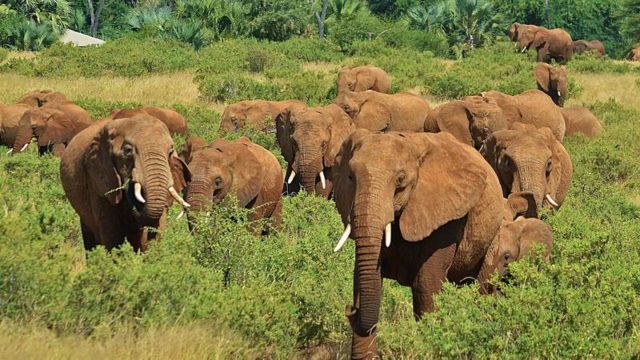
PBS is offering new programming to interested individuals over the summer. One example of this new programming is Nature’s Great Race, which consists of three episodes that will cover three of the most iconic animals that can be found in the whole world. Like its name suggests, the mini-series will focus on the migrations of said animals over a remarkable range of fascinating landscapes.
Here are the three species that will be covered in the three episodes of Nature’s Great Race:
Elephants
The first episode of Nature’s Great Race will be covering elephants as they migrate in the eternal search for sufficient food and water to sustain themselves. Said episode will not be focused on a single elephant but instead feature multiple stories with multiple protagonists. For example, one of the stories will be centered around a bull elephant named Matt, meaning that it will focus on his efforts to find a mate in spite of the fierce competition from his younger counterparts before the gathered elephants disperse.
Furthermore, one of the other stories will be centered around Habiba, a first-time mother who has become the leader of her herd after poachers killed no fewer than seven of its adult members, which means dangerous times for the entire herd due to her relative inexperience. This last point will be a topic of particular importance in the first episode of Nature’s Great Race, which plans to provide interested individuals with a good look at how elephants are coping in a world where their kind are so often killed for their tusks.
Caribou
Since the second episode focuses on caribou, it should come as no surprise to learn that it will be following their herds over the Canadian Arctic as well as its Alaskan counterpart. It is interesting to note that the footage for the episode has been captured by a team of researchers working with wildlife filmmakers, who followed the caribou herds on foot with some assistance from tracking collars placed on key members.
Over the course of episode, interested individuals can expect to learn more about the dangers such as bears and wolves that will be with the caribou as they make their way to their calving grounds, where they hope to find plentiful supplies of the cotton grass that will be needed to provide milk for their soon-to-be-born calves. Suffice to say that the episode will have no shortage of excitement for those who crave it.
Zebras
Zebras are known for making the longest migration for land mammals in Africa. As a result, people who watch the third episode can expect spectacular scenes of Botswana as well as a good look at all of the challenges that face the zebra herds as they head from the flood plains for the bush. However, this particular filming is more ambitious than most for the simple reason that the filmmakers are attempting to capture the entire journey from start to finish through the use of modern techniques and technologies. Unsurprisingly, this means that they are in for their share of surprises as they uncover things about the migration of the zebras that had remained unknown up until now.
 Follow Us
Follow Us





